Nikon DX and FX lenses are two of the most popular types of lenses on the market. But what’s the difference between them? And which one is right for you? In this article, we will answer those questions and more. We’ll discuss the pros and cons of both types of lenses, as well as provide some tips on how to choose the right one for your needs. So whether you’re a beginner or a seasoned photographer, read on to learn more about Nikon DX and FX lenses!
What is the Camera Format?
The first question that needs to be answered when discussing the difference between Nikon DX and FX lenses is what is the camera format? It is the format of an image sensor of the camera. The size and shape of the image sensor is determined by the camera format. And the sensor size determines the lens mount and flange focal distance. For this comparison, we shall take a look at two sensor sizes in digital cameras: full frame and APS-C.
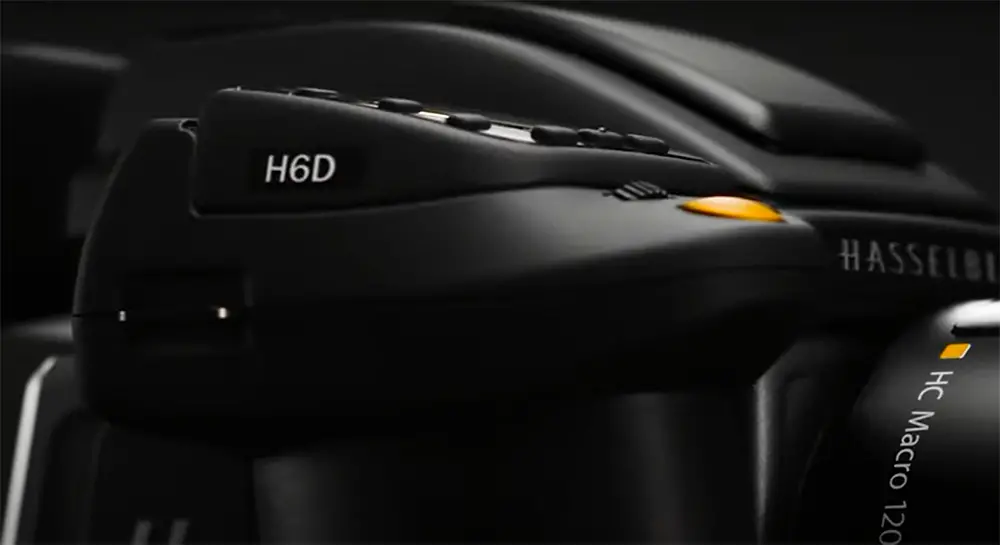
The dimensions of a Nikon full frame sensor are approximately 36mm x 24mm. This was the original size used in 35mm film cameras. As a result, full-frame DSLRs are sometimes referred to as 35mm DSLRs. On average, DX sensors are about 24.0 mm x 16.0 mm. They’re utilized in entry-level to mid-range DSLRs.
Full frame cameras have been around for years, but they’ve only recently become affordable for hobbyists and enthusiasts. The term “FX” comes from the fact that these cameras have a full frame sensor.
Full frame sensors are usually larger than APS-C ones and this means they can gather more light. That’s why you’ll find the least noise in low lit situations when using one of these cameras, as well as an increased dynamic range which results from having a shallower depth perception while taking portraits or other types of photographs that require focus on specific subjects like portraits, rather than everything around them (like landscapes). However, full frame DSLRs are usually more expensive than APS-C DSLRs.
APS-C sensors are smaller than full frame ones, so they can’t gather as much light. This means that in low light situations there will be more noise and less dynamic range for your photos – which may not always work out well depending on what type of photography you plan on doing with them! However these cameras usually cost less than their bigger counterparts.
Now that we’ve answered the question “what is the camera format and what is the sensor,” we can move on to discussing the difference between Nikon DX and FX lenses. [1], [2], [3], [4]
What Are Nikon DX Lenses?
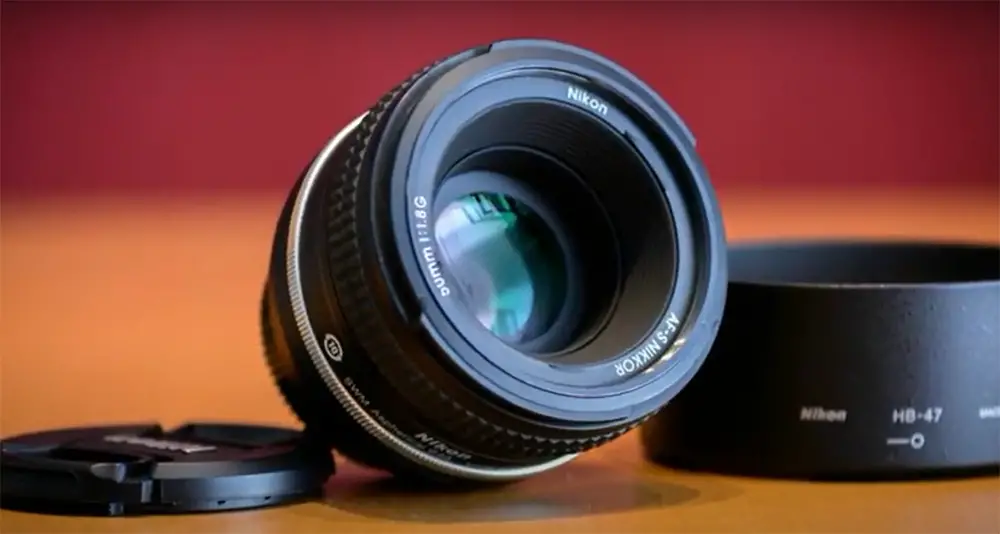
The original intention of the DX lens lineup was to provide a set of affordable and versatile lenses that would be perfect for entry-level and amateur photographers. Nikon’s ‘DX’ lenses are designed specifically with APS C sensors in mind, which means they will only cover part of your camera’s image circle when used on a full frame body like DSLR cameras or even some Mirrorless interchangeable lens systems (ILES). As we previously mentioned, the Nikon DX sensor size is only 24mm x 16mm.
The DX lens lineup from Nikon has been expanding over the years to include more variety and higher end features. From wide angle lenses perfect for portraits, all the way up through telephoto options that will help you take pictures at various distances–there’s something here useful no matter what type of photography you do! [1], [2], [3], [5]
What Are Nikon FX Lenses?
The Nikon FX lenses are a set of lenses produced by Nikon with the primary goal to provide photographers with a lens that would allow them to capture pictures with a wider angle of view.
Nikon’s first full frame DSLR, the Nikon D700, was released in 2008. Nikon D3 and D700 were the first two Nikon FX format DSLRs. Since then, Nikon has released several more full frame DSLRs, including the Nikon D610, D750, and D810. [6]
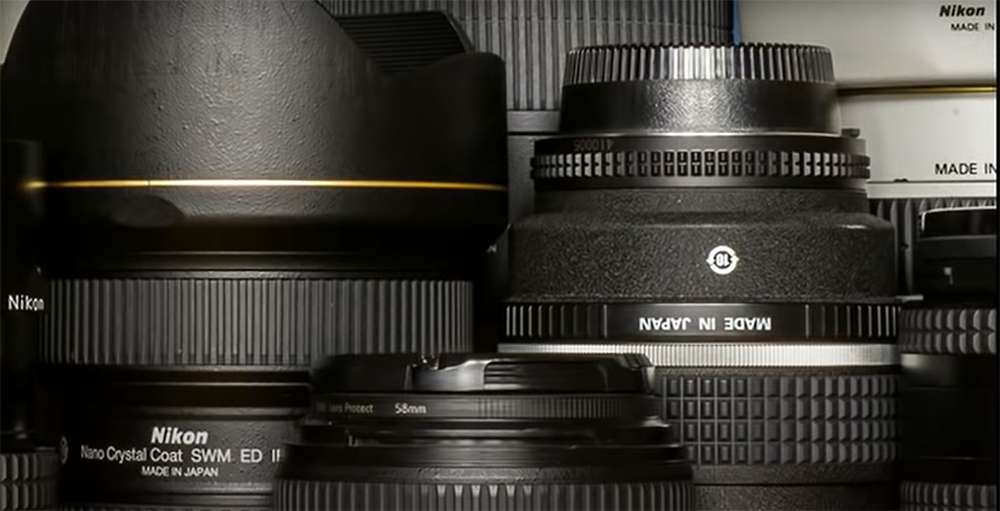
The sensor size of a full frame sensor is 36x24mm. Having a sensor size nearly 2x as big as DX sensor, Nikon FX lenses are designed for use with Nikon’s full-frame DSLRs. These lenses offer the largest image circle and can therefore project an image onto the entire sensor. This vastly improves the performance in low-light situations. FX lenses also tend to be higher quality overall.
Of course, there are also a few disadvantages to shooting with a full frame camera equipped with FX lenses. For one thing, they’re usually more expensive than APS-C cameras. They’re also heavier and bulkier, which can be a pain if you’re trying to travel light. [1], [2], [3], [5]
How to Tell Which Lenses Are Used by My Camera?
If you’re wondering why there isn’t any “FX” present on the lens, it’s because all Nikon FX lenses are full frame. That is, they project an image that covers the entire sensor. So there’s no need to put “FX” on the lens, since it’s already implied. [5]
Can you use an FX lens on a DX camera?
The simple answer is yes, you can use an FX lens on a DX camera. However there are some important things to keep in mind when doing so – first and foremost being that since this will result in what’s called crop factor distortion (meaning images are zoomed into), make sure your subject lines up well with where they would be if shot with a DX lens. The amount of cropping depends on the specific camera model, but usually you should expect it to be around 1.5x. This means that if you’re using a 24mm FX lens on a DX camera, the effective focal length will be around 36mm. In other words, the field of view will be narrower and objects will appear closer than they would if shot with a DX lens. [2], [3], [5]
Can you use a DX lens on an FX camera?

The simple answer is yes, you can use a DX lens on a Nikon FX camera. The image will appear in the center of your frame with black vignetting (darkening) at the edge caused because the DX is smaller than sensors found in FX cameras. The lens produces an image that covers the entire FX sensor, but since the sensor is smaller than the image produced by the lens, you end up with black vignetting around the edge of your photos.
If you’re shooting with a DX lens on an FX camera and don’t want any vignetting, you’ll need to employ cropping. Cropping is when you take a photo with a DX lens on an FX camera and then use software to remove the black vignetting from the edges of the photo. Luckily, the camera software will do it by itself, automatically!
Keep in mind that when you utilize a DX lens on an FX camera, you’re only obtaining a portion of the benefits of using an FX camera. Because an FX camera has a larger sensor than a DX camera, it may capture more light and create superior picture quality. So, if you want to take your photography to the next level, it’s better to buy a full-frame camera.
Now that you know the basics behind camera formats, let’s move on and talk about the differences between DX and FX lenses. [1], [2], [3], [5]
Differences Between DX and FX Lenses
Advantages of the DX lens format
Now, we shall start by looking at the advantages of the DX lens format. As we already mentioned, these lenses are designed for Nikon’s line of APS-C sensor cameras, which includes models like the D7500, D5600, and D3500. So let’s get going.
Size and weight
One of the main advantages of the DX lens format is that they are smaller and lighter than their FX counterparts. This is due to the fact that the sensor size on DX cameras is smaller than on FX cameras. This makes them ideal for travel photography, as you can pack more lenses without exceeding your baggage allowance. [1], [3], [4], [7]
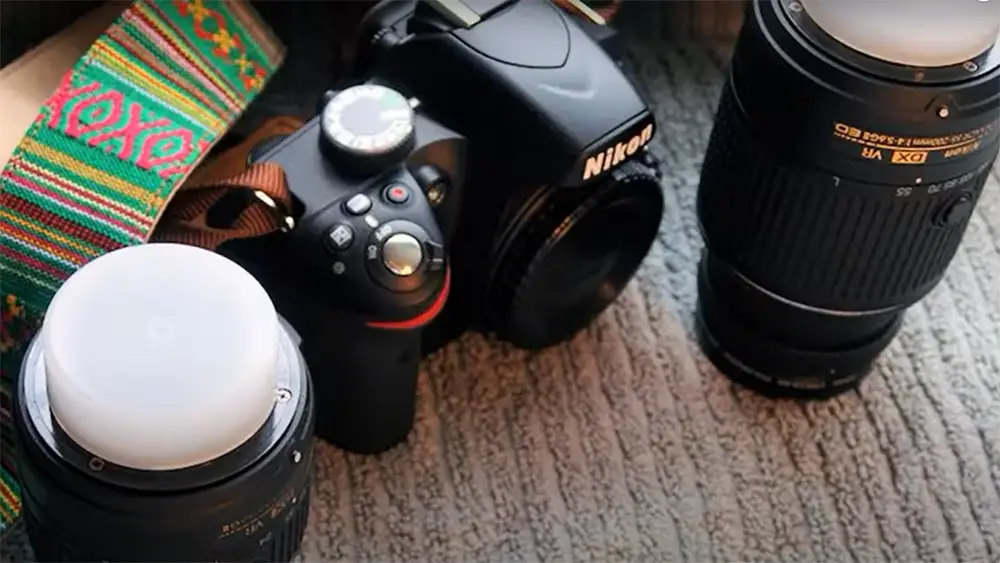
Cost of the Sensor
It’s a well known fact, that it’s cheaper to produce a sensor with a smaller surface area, which is a DX sensor. This is because they are not as complex to design and manufacture, and there is a greater demand for them since more people own DX cameras. That means that you can save some money on your purchase by going with the DX over the FX.
Smaller sensor may not sound optimistic, but it actually can create a slight magnification of the image being photographed.
This can be a great advantage if you’re wanting to get closer to your subject matter without having to invest in an expensive telephoto lens. This can be very useful for macro-photography or portraits. It also means that your wide-angle shots will appear slightly more zoomed in than they would with an FX sensor, with nice effects around the corners around the film. [1], [3], [4], [5], [7]
Cost of the Lenses
The DX lens format has a number of advantages, including the lens price. The lenses designed for DX sensors are usually less expensive than FX lenses. And the reason for that – it costs less to produce a lens with a smaller focal length. Also this makes the lenses more compact as well. [1], [3], [4], [5], [7]
Lens sharpness and vignetting
In general, you’ll also get better lens sharpness and less vignetting with a DX lens. That’s because lenses designed for APS-C sensors have to project a smaller image circle onto the sensor. And since there’s less area for the light to cover, it results in sharper images with less edge distortion.
Reach of the Lenses
Reach is the distance between the sensor and the subject, and it’s crucial for two reasons. First, because a longer reach allows you to include your subject in the frame from greater distances. Second, because a longer reach will also increase your subject while magnifying it, which can be beneficial for wildlife shots.
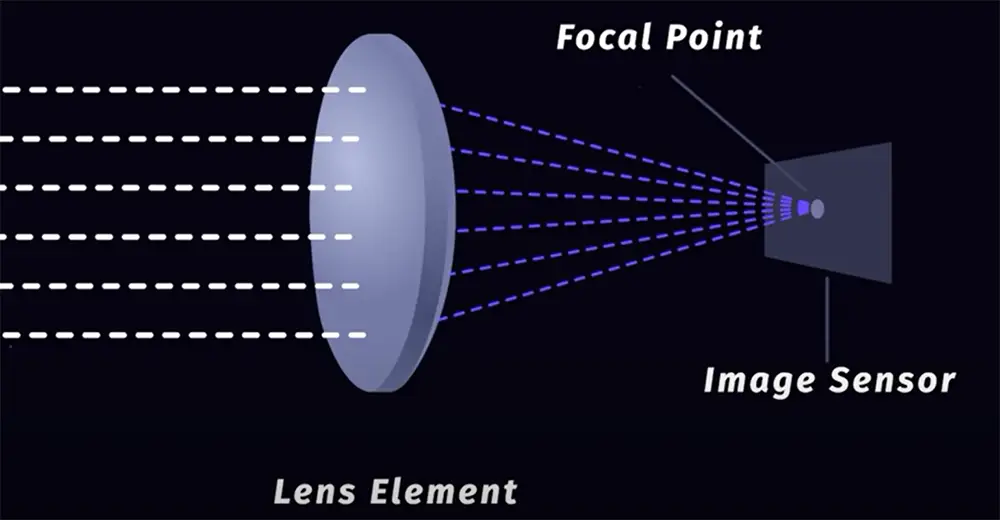
One of the main advantages of the DX lens format is its reach. These lenses are designed to provide a longer focal length than their FX counterparts, which gives you more telephoto power in a smaller and lighter package. [7], [9]
So those are some of the advantages of choosing a DX lens over an FX lens. Now let’s cover the cons.
Disadvantages of DX Lenses
Despite having plenty of advantages, there are also some disadvantages of using a DX lens.
Lens diffraction
Diffraction occurs when light waves bend as they pass through a small opening, like the aperture of your camera. These diffracting rays then start to interfere with each other and become increasingly difficult for your lens system because it can’t resolve detail effectively anymore – what was once an object now appears blurry. The smaller the opening, the more pronounced the effect. So, why does this matter?
Well, if you’re trying to take a sharp photo with a lot of detail, you’ll want to use a small aperture to let in less light and reduce diffraction. However, using a small aperture also has its drawbacks. For one, it can make your image appear dark. And secondly, it can decrease the amount of light reaching your sensor, which can impact image quality. This causes the image to become soft and less sharp, plus it may become fuzzy around the edges.
One of the main disadvantages is that due to their small sensor, DX lenses have a much higher chance of experiencing lens diffraction if you use a lens smaller than f/8.
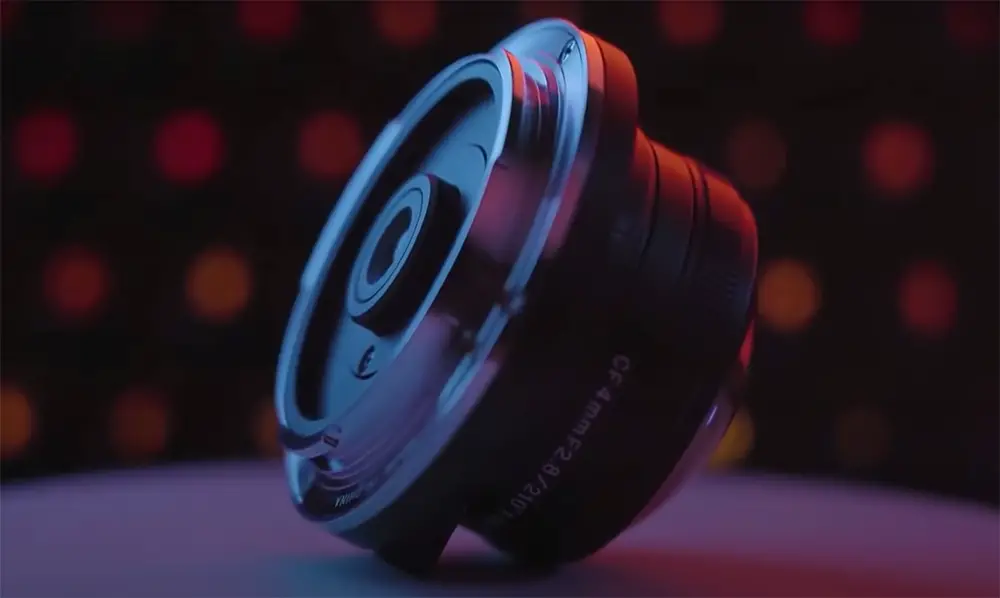
You can avoid this problem by using a larger aperture (lower f-number), but then you sacrifice depth of field. Another way to avoid lens diffraction is to shoot at a lower ISO setting, which will also help with noise reduction. But again, this might not be possible in all situations. [3], [4], [10], [11]
The noise amount on high ISO levels
Another disadvantage of DX lenses that should be mentioned is that, because they have a smaller sensor, the noise amount on high ISO levels is significantly higher than on FX lenses. This is due to the fact that there are less pixels on a DX lens, so each pixel has to work harder in order to capture the same amount of light as an FX lens. As a result, the image quality on high ISO levels is not as good as it could be if you were using an FX lens.
You can tackle this problem by trying to use a low ISO setting on your camera. This will prevent the sensor from picking up as much light, which will in turn reduce the amount of noise in your final image, but it will also make your image darker. You might be interested in how to change ISO on Nikon D3500 guide.
The solution to this problem is using a low ISO setting on your camera. This will prevent the sensor from picking up too much light, which in turn reduces noise and makes for an easier-to-see final image but it also means that you’ll have less color and less brightness when shooting outdoors or under worse conditions. [3], [4]
Less dynamic range
The dynamic range is the measure of how well a lens can reproduce both the darkest and lightest parts of an image. A camera’s sensor also has a native dynamic range, which is why some lenses are better than others at taking pictures in different lighting situations.
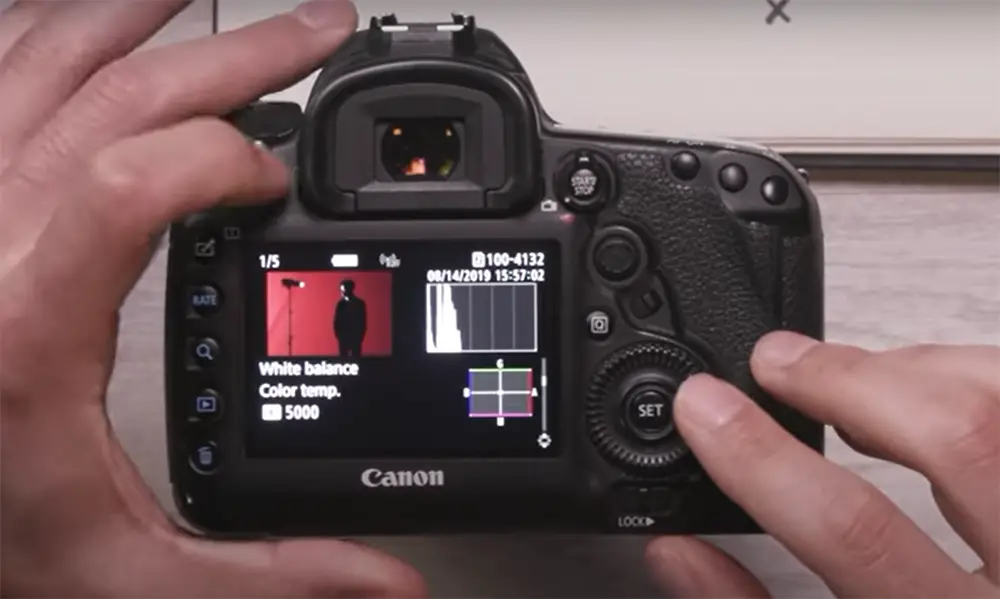
For example, a low-end point-and-shoot camera might have a sensor with 12 stops of dynamic range, while a high-end DSLR might have 14 stops. But even the best DSLR sensors can’t make use of all the light that comes through the lens if the lens itself doesn’t have enough contrast or resolution to capture it.
The lowest dynamic range of all is that offered by DX lenses. This implies you won’t be able to capture as much detail and contrast in both the highlights and shadows of your photograph. [3], [7]
Narrow field of view
Additionally, DX lenses also have a narrower field of view than FX lenses. This can be both a good and bad thing, depending on the type of photography you’re doing, so we decided it’s worth mentioning still. If you’re shooting landscapes, for example, you might want the wider field of view that an FX lens provides. But if you’re shooting portraits, the narrower field of view of a DX lens can help to isolate your subject from the background.
The field of view is the area that you can see through your camera lens. It’s measured in degrees, and the bigger the number, the wider the angle of view. Nikon DX lenses have a smaller field of view than FX lenses because they’re designed for use with APS-C sensors. This means that if you’re using a Nikon DX lens on an FX body, you’ll get a cropped image.
One way to think of it is like this: imagine you’re taking a photo of a building with an FX lens. The building will take up most of the frame, but you’ll also be able to see some of the surrounding area. Now imagine you’re taking that same photo with a DX lens. The building will still take up most of the frame, but you won’t be able to see as much of the surrounding area.
The field of view is one of the main differences between Nikon DX and FX lenses, and it’s something you need to keep in mind when choosing a lens for your camera. If you’re not sure which sensor size your camera has, check the user manual or look online for more information. [1], [12]
Problems with wide-angle lenses
The biggest issues you’ll face are with wide-angle lenses. Nikon DX and FX cameras come in a variety of focal lengths, but the angle of view on DX lenses is smaller than that on FX lenses. This is due to the fact that a Nikon DX camera has a smaller sensor size than an FX camera. So, if you want to take a wide-angle shot, you’ll need an FX lens.

On an FX camera, a 24mm lens will give you a true wide-angle field of view. But on a DX camera, that same 24mm lens will only give you the field of view equivalent to 36mm. In other words, your wide-angle options are much more limited with a DX camera. [3], [4], [7]
DX lens incompatibility with FX
It’s also worth noting that you can’t use a DX lens with an FX camera to its full potential. The image circle in an FX camera is simply too large for a DX lens. As a result, you won’t be able to utilize the full field of view that your camera is capable of. Plus your images will only be half their potential resolution.
This means, if you have a DX camera and are considering upgrading to an FX model, keep in mind that you’ll also need to purchase some new lenses. This is due to the fact that your current DX lenses will offer a field of view comparable to a cropped image on an FX camera. [3]
Smaller viewfinder size
Viewfinder is a digital display located on the back of your DSLR that shows you what the camera sees. It’s important to know how to use it, because it will help you take better photos.
One of the main disadvantages is that you’ll have a smaller and dimmer viewfinder size. This is due to the smaller mirror and sensor size, which means less of the scene will be visible through the lens. This can make it more difficult to compose your shots, especially if you’re trying to photograph something small or in low light. It can also be more difficult to manual focus, as there will be less area in the frame to focus on.
So those are some things to keep in mind if you’re considering a DX camera. Overall, they’re great lenses that offer a lot of features and capabilities. Just be aware of the limitations so you can make an informed decision about whether or not it’s the right lens for you. [3], [4], [7]
Now, let’s dive into the pros and cons of FX lenses.
Advantages of Nikon FX Lenses
Wideness
FX lenses offer a wider field of view than DX lenses. Wider field of view is made possible by the fact that FX lenses aren’t limited by the smaller sensor size of DX cameras. This gives them a wider angle of view, which can be handy in a variety of situations. This is because they have a larger image circle that covers the entire sensor (or film).
DX lenses are designed for cameras with smaller sensors, so they don’t need to be as wide. This means that you’ll get a narrower field of view when using a DX lens on an FX camera. With FX lenses however, you will get a 16mm field.
The wide field of view, on the other hand, has a couple of drawbacks. One is that it might be more difficult to keep your subject in focus since there’s more space for your camera to concentrate on. This is because there’s now more room for your camera to focus on. If you’re photographing a fast-moving object or if you’re using a long focal length lens, this may cause problems. [3], [4], [5]
Larger and brighter viewfinder image
With an FX lens mounted, the viewfinder image is larger and brighter than with a DX lens. This is due to the fact that an FX-format sensor is about 36x24mm in size—the same dimensions as a frame of 35mm film. A DX sensor, on the other hand, is about 24×16.
An FX-format camera’s viewfinder is considerably larger than that of a DX-format camera owing to the different sensor sizes. The wide view allows you to frame photos more easily and in much more detail. [3]
Lens diffraction
FX lenses have one more pro to them, is that they don’t suffer from as much image diffraction as DX lenses. This is due to the fact that an FX camera’s image sensor is larger, so the lens does not have to project such a large picture on it. As a result, there’s less of a chance light rays will bounce around in the lens and cause blurriness and other problems. [3]
Lens compatibility
FX lenses are also better because they are a great way to get the full potential of your camera. They work with both DX and FX cameras, so you can take advantage of them, without having to worry about compatibility issues. Although DX lenses can also be used on FX cameras, they will only work in cropped mode. This means that you won’t be able to take advantage of the full sensor size. [1], [2]
Large dynamic range
FX lenses also offer a large dynamic range. This allows for greater flexibility when shooting in difficult lighting situations, such as when shooting backlit subjects in low-light environments.
Due to the higher number of pixels, Nikon’s FX lenses tend to have better contrast and higher resolving power than their DX counterparts, which means they’re able to take full advantage of the dynamic range of even the best DSLR sensors.
Large dynamic range is also beneficial for HDR photography, as it allows for more detail to be captured in both the shadows and highlights of an image. [4], [7]
Scalability of the Lenses
One of the most significant benefits of FX lenses is their scalability. They may be used on both full-frame and crop-sensor cameras. A crop sensor will provide you with a shallower depth of field and additional telephoto capability when compared to a full frame camera.
Scalability is the number one reason why many photographers choose to invest in FX lenses, even if they don’t currently own a full-frame camera. It gives you the option to upgrade your camera body in the future without having to reinvest in a new set of lenses.
Scalability of lenses is determined by its image circle. A lens with a large image circle can be used on cameras with larger sensors, while a lens with a smaller image circle can only be used on cameras with smaller sensors. Nikon FX lenses have a large image circle, so they can be used on both FX and DX cameras. On the other hand, Nikon DX lenses have a small image circle and while they can be used on DX cameras, the image will look cropped.
If you own both types of Nikon cameras or are thinking about upgrading in the future, then this scalability will come handy. It also makes FX lenses a great investment since they can be used with both camera types! [1], [2], [3]
Provide higher sensitivity and lower noise
A full-frame sensor’s larger pixels allow for greater light sensitivity and less digital noise in your photographs. This is especially true when it comes to low-light situations, making FX cameras perfect for night photography, astrophotography, and other difficult lighting conditions.
Even on high ISO settings, FX cameras are able to produce images with less digital noise than DX models. [3], [5]
No field of view issue
The FX format also doesn’t have to deal with the same field of vision issues that DX format lenses have. This means that you won’t have to worry about your photos being cropped or having to make equivalent focal length adjustments when you use an FX lens. [3], [5]
It’s pretty obvious that FX Lenses have an immense number of benefits, but they do come with a few potential cons.
Disadvantages of Nikon FX Lenses
Vignetting around the corners of the frame
Some people find that their FX lenses cause an unpleasant vignetting effect around the corners of a photo. This is caused by shadows from those wide-angle settings being projected onto your sensor, which can make for some interesting shots but most often than not also less than perfect pictures.
Vignetting can be reduced by using a lens hood or decreasing the aperture, but it’s something to keep in mind if you’re shooting landscapes or astrophotography with an FX lens. [3], [4], [7]
Lens sharpness
While FX lenses offer excellent image quality, they’re not always as sharp as their DX counterparts. This in return may cause softer, blurry corners in your pictures. [3], [7]
Size and weight
Probably the disadvantage of Nikon FX lenses you will notice instantly, is their size and weight. They are larger and heavier than DX lenses, making them more difficult to carry around.
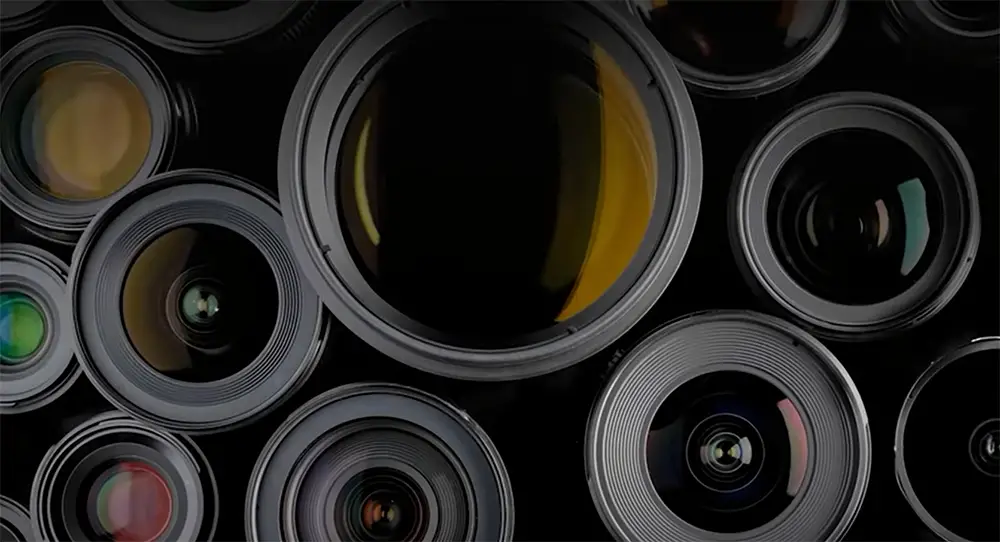
It’s a pain if you’re traveling or trekking and want to minimize the weight of your camera equipment. This can be an issue if you’re photographing landscapes or wildlife that need to be placed quickly, such as shooting birds in flight.
FX lenses have larger elements that project a bigger picture than DX lenses because of their increased image circle (or film) coverage. FX glasses are also bulkier and heavier than their DX counterparts as a result of these physical differences. [3], [4], [7]
Their cost
FX lenses are more expensive than DX lenses for the same reason that they have more functions. Because of this, they are more costly to create, which is reflected in the price. This is something to bear in mind if you’re on a tight budget. There are some budget-friendly choices accessible, so do your homework before purchasing. [3], [4], [5]
Despite these potential drawbacks, FX lenses offer a number of advantages that make them well worth the investment for serious photographers. If you think you might want to upgrade to an FX camera in the future, it’s worth considering investing in some FX lenses now. That way, you’ll be able to get the most out of your camera when you do make the switch.
So What Type Of Lens Shall I Buy For My Nikon DSLR Camera?
When it comes to deciding between Nikon DX and FX lenses, it really depends on your needs as a photographer. Both lenses can be used with either camera type, so aside from drawbacks like size and price, it’s really up to you. We have covered the main differences between the two lens types below to help you make a decision. It depends on how much money you are willing to invest and what do you expect from your brand new lenses.
If you want to take pictures like a pro, read the following articles:
FAQ
What is the difference between DX and FX Nikon lenses?
Nikon FX lenses are made for full frame cameras, while DX lenses are specifically designed for APS-C sensors. That’s the most important distinction between the two – full frame vs cropped sensor. But, as you can imagine, there are a few other implications of this difference.
For instance, a full frame camera has a larger sensor than other cameras. This means that the camera can gather more light and that your images will have less noise.
Another advantage of shooting with a full frame camera is that you’ll get shallower depth of field.
Can Nikon Z use DX lenses?
Nikon Z cameras have a full-frame sensor, so you might think that you can only use FX lenses with them. However, that’s not the case – you can also use DX lenses. The camera will automatically crop the image to fit the smaller sensor. Same goes for DX cameras, they can use FX lenses, as both are interchangeable.
How big is the sensor in FX cameras?
FX cameras have a full-frame sensor, which is the same size as a 35mm film negative. That’s about 36mm x 24mm. In contrast, DX sensors are about half that size – they’re about 24mm x 16mm.
Is an FX camera better than DX?
No, not necessarily. An FX camera has a full-frame sensor, comparable to a 35mm film slide. This gives you the potential for very shallow depth of field and extremely high image quality. On the other hand, DX cameras have sensors that are about half the size of an FX sensor. This results in a slightly lower image quality but allows for a lighter and more compact camera body since less glass is needed to cover the smaller sensor. Ultimately, it comes down to personal preference and what you plan to use your camera for.
What are the benefits of using a Nikon DX lens?
One of the main benefits of using a Nikon DX lens is that they are significantly lighter and smaller than FX lenses. This makes them much more convenient to carry around, especially if you plan on traveling with your camera. Additionally, DX lenses tend to be less expensive than their FX counterparts.
Another benefit of using a Nikon DX lens is that they offer a wider field of view. This is due to the fact that they have a smaller sensor size. For example, a 50mm DX lens will provide you with approximately the same field of view as an 80mm FX lens. This can be useful for landscape and architectural photography.
Finally, DX lenses are also generally sharper than FX lenses at comparable focal lengths and aperture settings. This is due to the fact that they have less glass elements and are designed specifically for use with APS-C sensors.
What are the benefits of using a Nikon FX lens?
The main benefit is that you’ll get sharper images due to the fact that FX lenses are designed for use with full-frame cameras. This also means that you’ll have more light-gathering ability, which will result in better low-light performance. Additionally, FX lenses tend to be built better and have higher quality glass, which results in better overall image quality.
So, if you’re a professional photographer or someone who wants the absolute best image quality possible, then FX lenses are the way to go. However, if you’re just starting out or on a budget, then DX lenses may be a better option since they’re typically cheaper and still provide good image quality. Whichever route you choose, just know that Nikon makes great lenses for both systems.
Are there situations where it is better to use a DX lens instead of an FX lens?
There are a few reasons why you might want to use a DX lens over an FX lens. One reason is size and weight. DX lenses are typically smaller and lighter than FX lenses, making them more convenient to carry around. Another reason is that DX lenses tend to be less expensive than FX lenses.
So, if you’re looking for a small and lightweight lens that won’t break the bank, then a DX lens might be the right choice for you. However, if you need the best image quality possible, then an FX lens is probably the way to go.
Can I use a Nikon DX lens on a full-frame camera?
The simple answer is yes, you can use a Nikon DX lens on a full-frame camera. In fact, many professional photographers do just that. The reason is that the image quality of DX lenses is often very good, and they are typically much less expensive than FX lenses.
However, there are some important things to keep in mind if you plan to use DX lenses on a full-frame camera. Because DX lenses are intended for smaller sensor cameras, they will have a narrower field of view than an FX lens designed for a full-frame camera. This means that your images will not be as wide as they would be if you used an FX lens.
Second, since DX lenses are created for smaller sensor cameras, they have a shorter minimum focus distance. This means that you may not be able to get as close to your subject as you would with an FX lens.
Third, because DX lenses are designed for smaller sensor cameras, they will typically have a smaller maximum aperture. This means that they will not let in as much light as an FX lens, which can be a problem in low light situations.
Can I use a DX lens on a mirrorless camera?
The simple answer is no, you cannot use a DX lens on a mirrorless camera. The reason for this is that DX lenses are designed specifically for use with Nikon DSLR cameras, which have a specific sensor size. Mirrorless cameras, on the other hand, have sensors that are much smaller than those in DSLRs. As such, using a DX lens on a mirrorless camera would result in vignetting (darkened corners in your photos) and reduced image quality overall.
So, if you’re thinking about switching to a mirrorless camera system from Nikon, you’ll need to invest in new lenses as well. Fortunately, Nikon makes a great selection of FX-format lenses that can be used with both its DSLRs and mirrorless cameras. And, if you already have a collection of DX lenses, you can still use them with your new mirrorless camera by using an adapter.
Is the Nikon D7500 a DX or FX?
The Nikon D7500 is a DX camera, meaning it has a cropped sensor. This means that the lenses you use on the D7500 will have a slightly different field of view than they would on an FX camera with a full-frame sensor. For example, a 50mm lens on a DX camera will have a field of view equivalent to 75mm on an FX camera.
So, if you’re looking to buy lenses for your Nikon D7500, be sure to get DX lenses. These will give you the proper field of view for your camera’s sensor size. And if you ever decide to upgrade to an FX camera, you can still use your DX lenses – they’ll just have a slightly narrower field of view.
Can Nikon mirrorless use FX lenses?
There is a common misconception that Nikon’s mirrorless cameras can only use DX lenses. This is not the case! In fact, Nikon’s mirrorless cameras are fully compatible with both DX and FX lenses. DX lenses are designed for use with Nikon’s APS-C sensor cameras, such as the D3300 or D5300. These lenses have a smaller image circle that covers the APS-C sensor size. As a result, they are lighter and smaller than FX lenses. Additionally, DX lenses typically have a shorter focal length and wider field of view than FX lenses. FX lenses are designed for use with Nikon’s full frame sensor cameras, such as the D610 or D810. These lenses have a larger image circle that covers the full frame sensor size. As a result, they are typically heavier and larger than DX lenses. Additionally, FX lenses typically have a longer focal length and narrower field of view than DX lenses.
Useful Video: Nikon FX vs DX – What’s the Difference? (Hindi)
Conclusions
So, which lens is better for you? If you are shooting a full frame camera, FX lenses are the way to go. However, if you have a DX camera, using DX lenses will give you better sharpness and less vignetting on the native sensor. Keep in mind that FX lenses are bigger and heavier than their DX counterparts, and they also cost more. But with their superior image quality, they may be worth the investment for professional photographers.
But if you’re looking for a camera with no field of view issues and are willing to pay a bit more for it, FX lenses are the way to go. They also have higher sensitivity to light and produce less noise, making them ideal for low-light situations. However, they can be more difficult to use in tight spaces and may not always be as sharp as DX lenses are. If you want a versatile lens that will give you great photos in most situations, DX lenses are probably the best option. Whichever type of lens you choose, make sure to do your research so you can get the most out of your camera!
Whichever lens type you choose, make sure to do your research to find the perfect one for your needs. Thanks for reading!
References:
- https://photographybay.com/2014/07/10/what-is-the-difference-between-nikon-dx-and-fx-lenses/
- https://www.nikonusa.com/en/learn-and-explore/a/products-and-innovation/the-dx-and-fx-formats.html
- https://photographylife.com/nikon-dx-vs-fx#advantages-and-disadvantages-of-dx-format
- https://www.adorama.com/alc/nikon-dx-vs-fx-which-one-should-you-choose/
- https://www.photographypursuits.com/nikon-dx-vs-fx-lenses-what-is-the-actual-difference/
- https://www.kenrockwell.com/nikon/fx.htm
- https://www.bhphotovideo.com/explora/photography/features/dx-vs-fx-its-not-debate-its-choice
- https://photographylife.com/what-is-vignetting
- https://www.whatdigitalcamera.com/technology_guides/advanced-technology-guide-reaching-for-your-goals-85682
- https://www.masterclass.com/articles/what-is-lens-diffraction-in-photography
- https://photographylife.com/what-is-diffraction-in-photography#diffraction-and-depth-of-field
- https://www.studiobinder.com/blog/what-is-fov-definition/





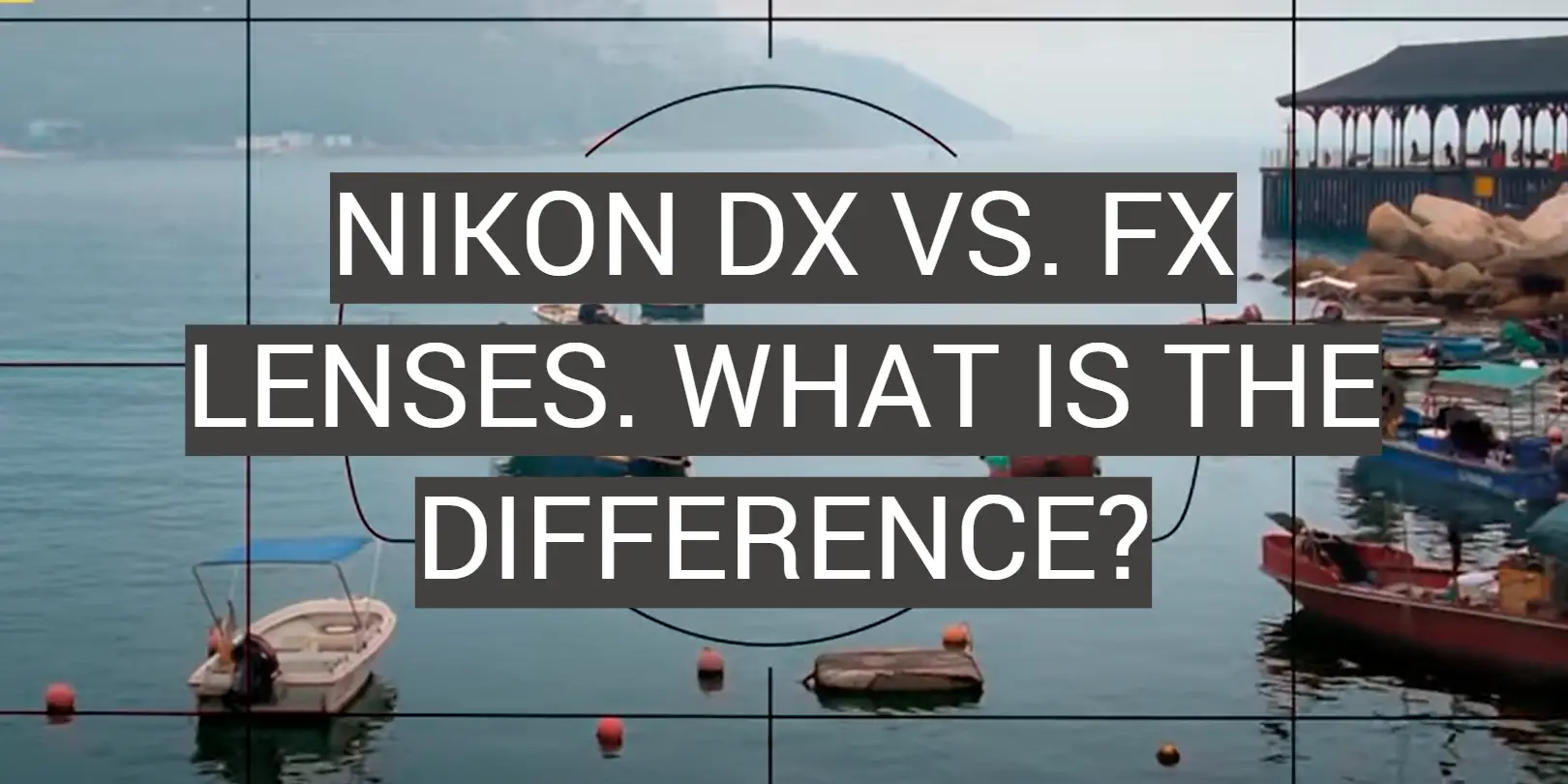
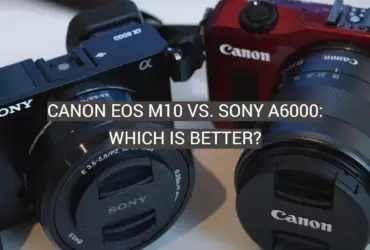

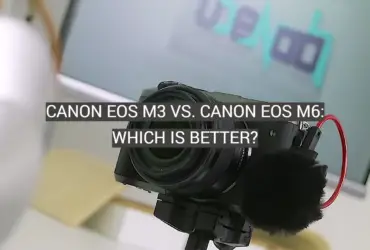
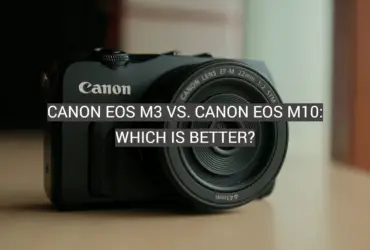

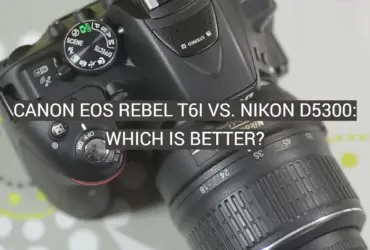
I have used a lot of Nikon lenses in my time as a photographer. I have shot with DX and FX formats, and I have to say that there are some clear differences between the two.
With DX, you are working with a cropped sensor format. This means that the focal length of your lens is multiplied by 1.5x. So, if you have a 50mm lens, it will look like a 75mm lens when used on a DX camera body. This can be great for telephoto shots, as you can get more reach than you would with an FX lens of the same focal length.
However, FX lenses are designed to work with the full-frame sensor of an FX camera body. Because of this, they tend to be larger and heavier than DX lenses. They also tend to be more expensive. But because they cover a larger area of the sensor, they typically produce better image quality than DX lenses.
For me, it ultimately comes down to what I am shooting and what I need from my lens. If I am shooting portraits of landscapes, I will typically opt for an FX lens. But if I am shooting action or wildlife, I will often use a DX lens to get more reach.
I have owned a number of Nikon DX lenses over the years and have always been happy with their performance. I especially like the fact that they are lightweight and compact, which makes them easy to take with me on trips. While I have never used an FX lens, I can imagine that they would be even more impressive in terms of image quality. That said, I am perfectly happy with my DX lenses and don’t see a need to upgrade at this time.
Nikon FX lenses are amazing! I love the fact that they are so versatile and can be used for a variety of different purposes. I have used my FX lenses for everything from landscapes to portraits, and they have never let me down. They are also great for capturing action shots, thanks to their fast autofocus systems.
I have never used a Nikon DX lens, but I can only imagine that they are not quite as good as FX lenses. This is because FX lenses are designed for use with the full frame sensor, which is larger than the DX sensor. This means that FX lenses can capture more detail and produce sharper images.
Overall, I would highly recommend using Nikon FX lenses if you have the opportunity. They are some of the best lenses on the market, and they will definitely help you take your photography to the next level.
I have been using Nikon FX lenses for a while now and I have to say that the depth of field is much more pronounced than when I was using DX lenses. For example, I was recently shooting a portrait and wanted to create a nice blurry background. With my DX lens, I had to back up quite a bit in order to get the desired effect. With my FX lens, I could stay much closer to the subject and still achieve the same result. This is just one example, but I have found that the depth of field is generally much greater with FX lenses.
I have personally shot with both Nikon DX and FX lenses and I can say that there are some key differences between the two.
DX lenses tend to be smaller and lighter than FX lenses, making them ideal for travel. They also tend to be less expensive than FX lenses. However, because they are designed for crop sensors, they have a narrower field of view than FX lenses.
FX lenses are larger and heavier than DX lenses, but they offer a wider field of view. They are also more expensive than DX lenses.
In my experience, FX lenses produce better image quality than DX lenses, especially when shooting in low light conditions. However, DX lenses are still a great option for those who want to save money or who need a lens that is smaller and lighter for travel.
I have been a Nikon shooter for over 10 years and have always used DX lenses on my DX camera bodies. I decided to purchase my first FX body, the Nikon D750, and use my DX lenses on it. I was really surprised at how well they worked. The image quality was excellent and I didn’t lose any functionality that I was used to with my DX lenses.
I would definitely recommend using DX lenses on FX bodies if you are just starting out or don’t want to invest in new lenses yet. I am now looking to upgrade some of my lenses to FX ones, but I will continue to use my DX lenses on my FX body when needed.
I have a Nikon D500 DX body and I recently purchased the Nikon AF-S FX NIKKOR 24-70mm f/2.8G ED lens. I have been using it for a while now and I have to say that I absolutely love it! The image quality is amazing and the zoom range is perfect for a wide variety of shooting situations.
However, I have to admit that I was a little hesitant to purchase an FX lens for my DX body at first. I wasn’t sure if it would be worth the extra money, or if it would even work properly. But after using it for a while, I can definitely say that it was worth the investment! The FX lens performs flawlessly on my DX body and the image quality is incredible.
So if you are considering purchasing an FX lens for your DX body, I would definitely recommend doing it! You won’t be disappointed.
I have personally used FX lenses on DX cameras and they work great! I have not had any issues with them and I love the versatility that they offer. With FX lenses, I am able to use the entire focal range of the lens, which is a huge plus. Overall, I would definitely recommend using FX lenses on DX cameras if you have the option!
I have had the opportunity to use a few different Nikon wide angle lenses on both the DX and FX formats, and I have to say that I definitely prefer the FX lenses. The wider field of view on the FX format makes it much easier to capture landscapes and tight spaces, whereas the DX format feels a bit more limited in comparison.
That being said, I have found that the Nikon wide angle lenses are not all created equal. Some FX lenses seem to offer a much wider field of view than others, and this can be a bit confusing if you’re not familiar with the lens lineup. So my advice would be to do some research online before purchasing an FX wide angle lens, to make sure you’re getting the right one for your needs.
I have been shooting with Nikon DSLRs for a few years now, and I have always used DX lenses. I have never used FX lenses before, but I have heard that they are much better in quality. Recently, I decided to purchase an FX lens to use with my Nikon D750. After using the FX lens for a while, I can definitely say that the quality is much better than what I am used to with DX lenses. The images are sharper and the colors are more accurate.
Overall, I would definitely recommend using FX lenses if you have the opportunity. They provide a much better photography experience than DX lenses do.
I have always been a Nikon shooter. I started with the Nikon D40, and then upgraded to the Nikon D7100. I loved my D7100, but I always felt like something was missing. And then I got my first FX camera, the Nikon D750, and everything changed. The FX format is so much better than DX! The sensor is larger, which means that you can get better quality images with less noise. The lenses are also bigger and more powerful, which makes them perfect for shooting weddings and other events. If you’re thinking about upgrading to an FX camera, I highly recommend doing it! You won’t regret it.
I have been a Nikon user for many years, and I have always shot with DX format cameras. I have never felt the need to switch to FX format, because I am happy with the results that I get from my DX cameras.
One of the biggest benefits of DX format cameras is that they are smaller and lighter than FX format cameras, which makes them easier to carry around. This is especially important when you are traveling, because you don’t want to be carrying around a heavy camera bag.
Another benefit of DX format cameras is that they are less expensive than FX format cameras. This is because they use smaller sensors, which means that the lenses are also smaller and less expensive.
I have found that DX format cameras are perfect for everyday shooting, and they produce great results. If you are looking for a camera that is small, lightweight, and affordable, then I would recommend a DX format camera.
Nikon DX lenses are designed for cameras with a cropped sensor, while FX lenses are designed for cameras with a full-frame sensor. I have both types of lenses and find that the DX lenses are much smaller and lighter, which makes them ideal for travel. The FX lenses are much larger and heavier, but they produce higher-quality images. I usually use my FX lenses for landscapes and my DX lenses for portraits and everyday shots.
I own both crop sensor and FX lenses, and I have to say that there is a noticeable difference in the images that they produce. My FX lenses are much heavier and larger than my crop sensor lenses, but the images they capture are much more detailed and clear.
Since I mainly shoot weddings and other events, I need lenses that can capture high-quality images quickly and easily. The FX lenses definitely meet that need, while the crop sensor lenses are a little slower and not quite as sharp. Overall, I would recommend using FX lenses if you want the best possible image quality, but crop sensor lenses are still a great option if you’re on a budget.
I have shot Nikon DX lenses on full frame bodies for a while and have found that they work great, but there are a few considerations to keep in mind. With the smaller sensor of the DX lens, you are getting a crop factor of 1.5x, so your field of view will be narrower than if you were shooting with an FX lens on a full-frame body. This can be great for telephoto shots, as you’ll get more reach, but it can also be limiting if you’re trying to shoot wide-angle landscapes. Another consideration is that because the DX sensor is smaller, the lenses themselves are also smaller and lighter, which can be nice when traveling. Overall, I’ve been happy with the results I’ve gotten from DX lenses on full-frame bodies; just keep in mind the limitations of the crop factor when choosing your shots.
DX lenses are designed for Nikon’s cropped sensor cameras and have a field of view that is equivalent to a focal length that is 1.5 times the length of the lens. FX lenses are designed for Nikon’s full-frame cameras and have a field of view that is equivalent to a focal length that is 1 times the length of the lens.
I have found that DX lenses tend to be smaller, lighter, and less expensive than FX lenses. They also tend to have a wider aperture, which can be helpful in low-light situations. However, FX lenses typically have a higher resolution and produce sharper images.
I have personally used both DX and FX lenses, and I prefer the quality of images produced by FX lenses. However, DX lenses are more than adequate for most shooting situations, and they offer some advantages that FX lenses do not.
I have had the opportunity to shoot with both Nikon DX and FX lenses, and I have to say that there are some clear differences between the two.
FX lenses are designed for Nikon’s full-frame cameras, while DX lenses are made for the company’s APS-C format DSLRs. This means that FX lenses can be used on DX cameras, but they will produce a cropped image; likewise, DX lenses can be used on FX cameras, but they will result in an image that is larger than the sensor.
So, which is better? Well, that really depends on what you’re looking for in a lens. FX lenses tend to be larger and heavier than their DX counterparts, but they also offer more features and often have a better build quality. They also tend to be more expensive.
DX lenses are smaller and lighter than FX lenses, and they usually cost less. However, they may not offer as many features as their FX counterparts, and their build quality may not be as good.
In my experience, I have found that FX lenses offer a bit more versatility due to their larger size and weight. This makes them a good option for landscape and portrait photography, where you need the extra focal length or want to create a shallow depth of field. DX lenses are better suited for travel photography and other situations where you need a smaller lens that is easy to carry around.
When it comes to image quality, there is a noticeable difference between FX and DX lenses. I have used both formats extensively and, for my money, FX lenses produce sharper images with more detail. This is especially apparent when shooting landscapes or other scenes with lots of textures and intricate details.
That said, DX lenses are not without their merits. They are smaller and lighter than FX lenses, making them ideal for travel photography or when you need to pack light. They also tend to be less expensive than FX lenses.
So which format is right for you? It really depends on your personal shooting style and what you plan to use the lens for. If you’re looking for the best possible image quality and don’t mind the extra weight and size, go with an FX lens. But if you’re after something more portable that still delivers good image quality, a DX lens is a great option.